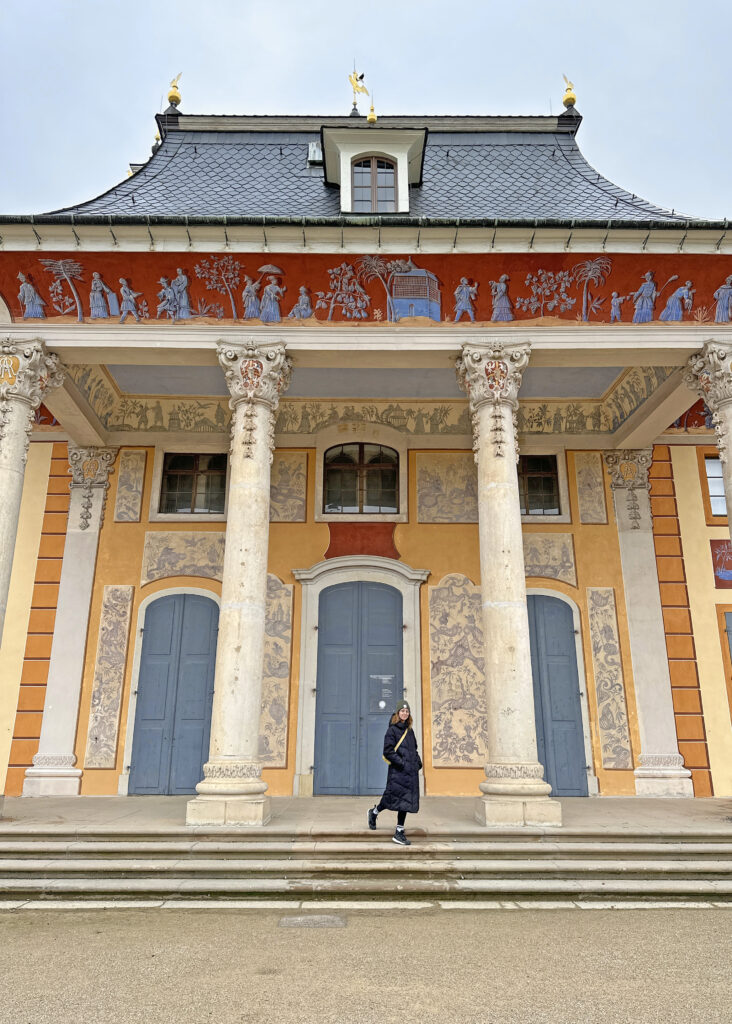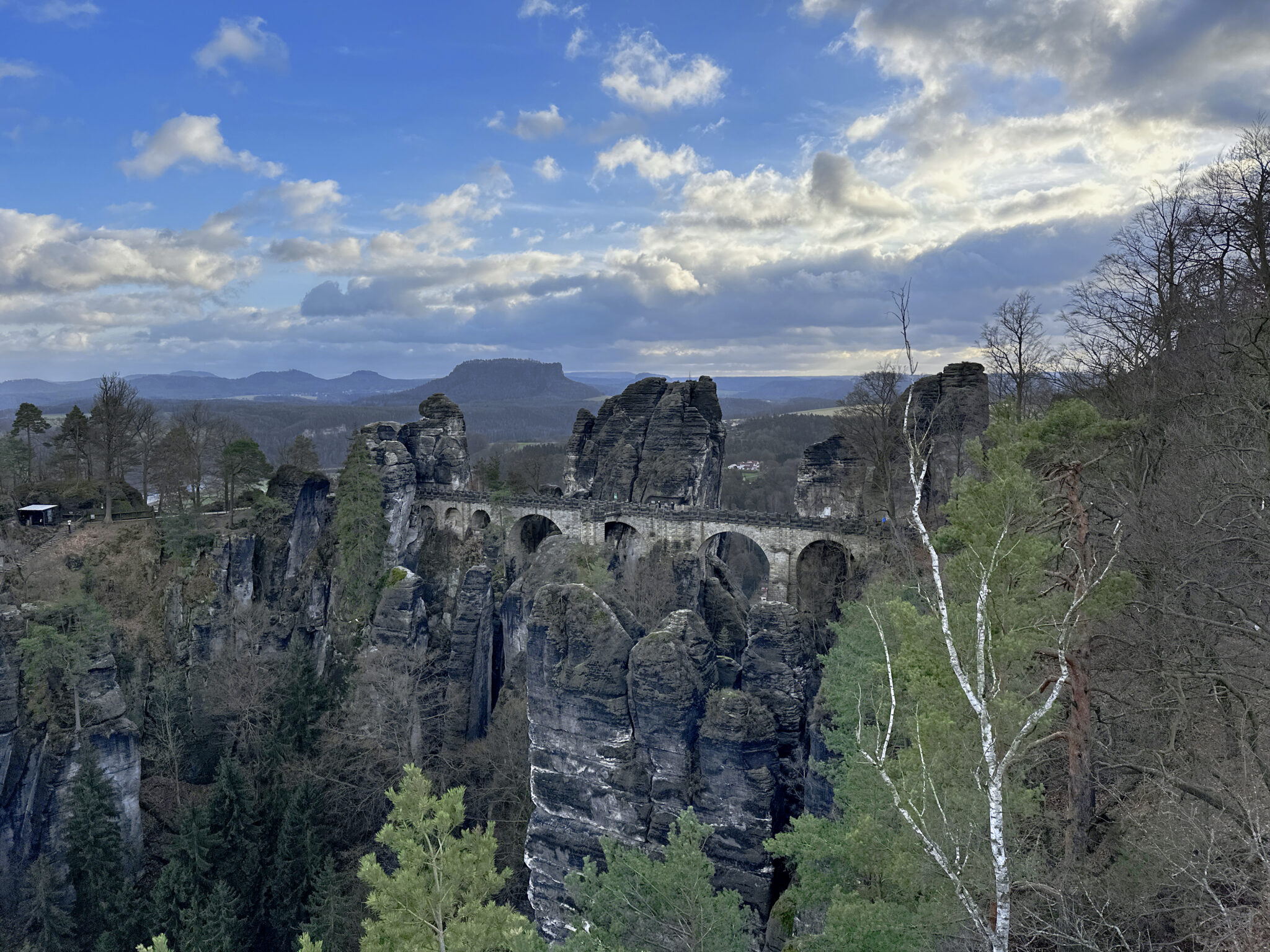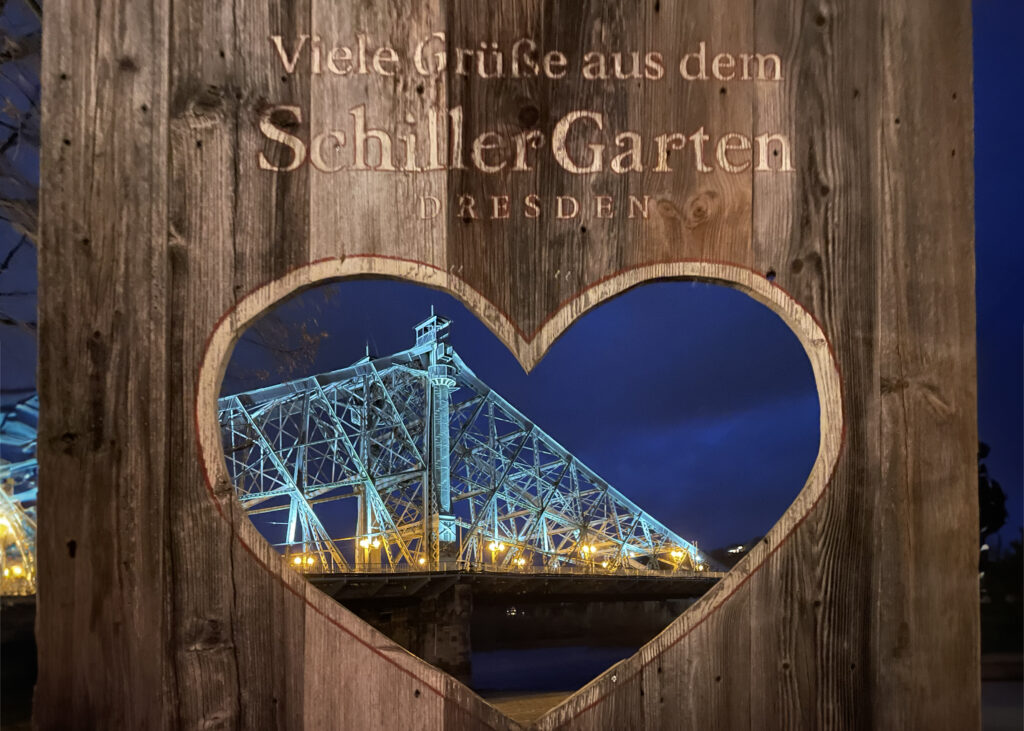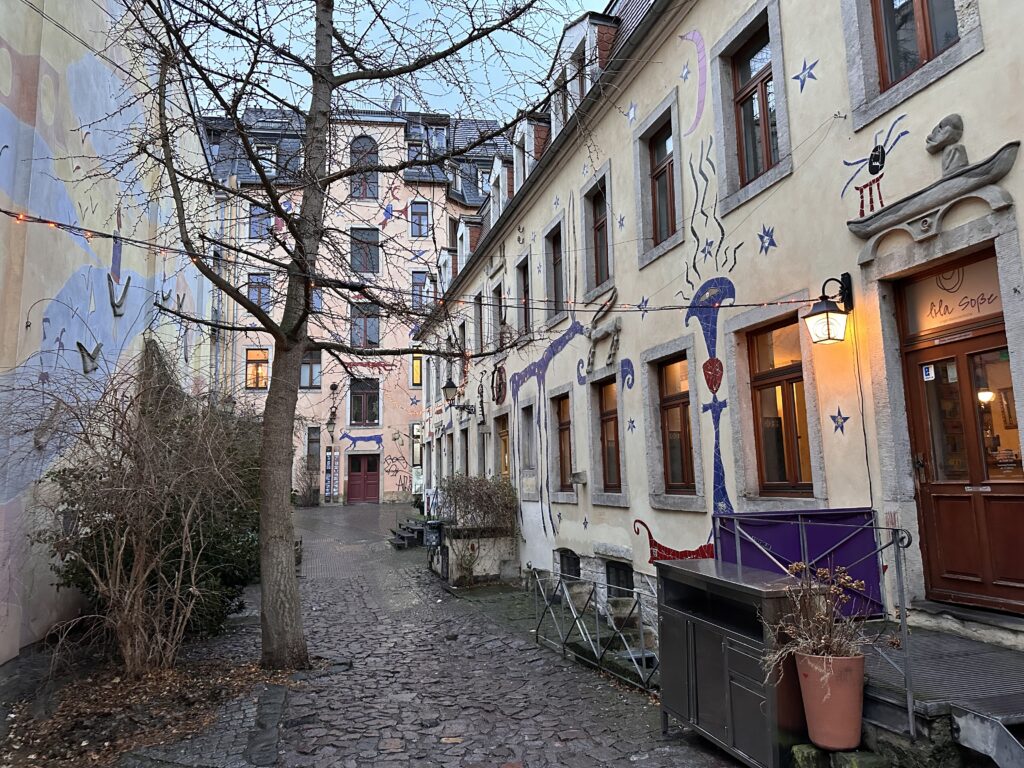We were looking for insider travel tips for you again and decided to take a weekend trip (Friday to Sunday) to Dresden and Bad Schandau. Why? Quite simply, we can get to Saxony quickly and easily from Berlin, and Saxon Switzerland is a natural paradise. Many people don’t even know what a unique hiking region Saxony offers or how relaxed Dresden is as a city. We were really sad on Sunday evening that we hadn’t planned more time.
Our hotel tips
The Holiday Inn at Zwinger
We wanted a central hotel, particularly in Dresden. We chose the Holiday Inn, which is located right next to the Zwinger. Everything is within walking distance from here, and the main train station is only 15 minutes away. There is even a fitness center and sauna here.
The Hotel Elbresidenz at the Bad Schandau Thermal Spa
For our second night, we treated ourselves to a good rest after all the hiking and checked into the 5-star Hotel Elbresidenz in Bad Schandau. Even from the outside, the hotel somehow radiates relaxation for us. The highlight of the hotel – the view of the Elbe and the hotel’s beautiful green area with terrace. We had breakfast and dinner reservations at the hotel, both of which were first class. The morning buffet was a veritable land of milk and honey and left nothing to be desired. During the summer, you can even enjoy breakfast outside in the beautiful hotel garden.
Our personal favorite was undoubtedly the hotel’s expansive wellness area. After a long day of adventure, a few relaxing sauna sessions were just what we needed. And with a wellness area like this, bad weather really is only half as bad. That is why we recommend Bad Schandau and the Elbresidenz, even if you prefer to do nothing but relax. For total wellness bliss, the Elbresidenz is also just a few meters away from the Toskana Therme. Perfect for a trip that combines both physical activity and regeneration.
Day 1 – Exploring Dresden
We arrived first! It’s usually easy to get to Dresden from all parts of Germany by train (warning, acute risk of joking). Unfortunately, we were affected by a train strike, so we switched to a rental car and were able to make our route a little more flexible in order to see more of the region. We arrived soon after, checked into our hotel, and made the decision to see some of the city’s main attractions. The Frauenkirche, Dresden’s Procession of Princes, and the art academy known as the Lemon Press are all easily accessible and will provide you with your first good photos of the baroque old town. If you are having lunch on your own and want to experience a little bit of history, we suggest the museum restaurant “Dresden 1900.”
After lunch, we were surprised by a rain shower, so we had to stick to our plans despite the bad weather. We took the tram to Schillerplatz and the Schiller Garden, just a few minutes’ walk away. What could be better than sitting in Saxony’s coziest conservatory when it’s raining? If we had to think up the perfect mulled wine spot, it would probably look like this.
Another neighborhood in Dresden that we can only recommend to you is the
Kunsthofpassage. As you know, we are always looking for the ideal photo backdrop, and we have found it here. The Kunsthofviertel consists of five courtyards, each designed by different artists and featuring a variety of artworks, installations and creative elements. It also offers a selection of small shops, cafés and restaurants that make the neighborhood a lively and inviting place. That’s exactly why you should also pay a visit to the Pfundsmolkerei. Not only can you buy delicious dairy products here, but you can also marvel at the architecture of the shop, which is a real gem. One of our highlights, is that it takes your breath away at first that this is a real shop and not a film set. We rounded off our evening in the cozy “Lila Soße” restaurant in the middle of the Kunstpassage.
Day 2 – Saxon Switzerland
Day two starts a little outside the city, because on our list is Königstein Fortress, which towers magnificently over the Elbe valley. For 15 euros, you can visit the entire site and learn about its 750-year-old history. It was founded in the 13th century and has served various purposes over the centuries, including as a military fortress, state prison, and treasury. Its location also earned it the title of impregnable fortress for a long time. Speaking of location, those who are not particularly interested in history will get their money’s worth here, as the view is simply breathtaking. Take a look at the events calendar at Königstein Fortress – concerts, theatre performances, and medieval markets take place here regularly.
The Bastei is undoubtedly one of the most striking landmarks in Saxon Switzerland and a popular tourist attraction. The Bastei consists of sandstone cliffs that have been formed by erosion over millions of years. The striking rock formations and cliffs contribute to its unique beauty and make it a favourite destination for hikers and nature lovers.
Various hiking trails start from the famous Bastei Bridge and are suitable for hikers of all levels. The Malerweg winds its way through the idyllic countryside and offers magnificent views of the Elbe and the surrounding Elbe Sandstone Mountains. A recommended route is from Basteibrücke down to Rathen. In just under two hours, you will have mastered the easy paths and can even cross the river by ferry. If you just want to enjoy the breathtaking view, you can make yourself comfortable in the Bastei Restaurant. We had an excellent meal here and admired the fantastic panorama at the same time.
In the late afternoon, we set off again towards Bad Schandau and the Elbresidenz, our new and final accommodation. Unfortunately, we didn’t have enough time, but the centre of Bad Schandau itself is well worth a visit. The town has a charming, historic town centre with elegant Art Nouveau buildings and impressive parks. However, Bad Schandau is much better known for its spa character.
The organic village of Schmilka is less than 10 minutes’ drive from Bad Schandau. The “village” is more or less a small street with cute half-timbered houses that has become famous for its sustainable and environmentally friendly way of life. The village runs entirely on renewable energy, eco-friendly building materials, and sustainable agriculture. All accommodation is furnished with natural materials such as wood or sheep’s wool, and you will find an organic restaurant, their own mill bakery, homemade cakes and tarts and home-brewed beer. Above all, we imagine the cosy and certainly very picturesque annual Christmas market to be so atmospheric in this setting.
Day 3 – A day in the realm of castles

Pillnitz Palace is a real gem near Dresden. You can take the bus from Dresden and get there in about 35 minutes. With its beautiful gardens and breathtaking architecture, it is the perfect place for a relaxing stroll. The history of the palace dates back to the 18th century and offers a fascinating mix of baroque and Chinese styles. This location guarantees excellent photo opportunities.
In the run-up to our trip, we checked one place off our must-see list: Moritzburg Castle. This brought up the discussion: “How many people know Three Hazelnuts for Cinderella? After all, it was this classic, published in the 1970s, that made Moritzburg Castle internationally famous in one fell swoop. The Cinderella reference is still an important part of the show today. Exhibitions, statues, and even the iconic shoe on the staircase are all reminiscent of the film. PS: On the outside staircase on the right, you can even try out for yourself whether you fit into Cinderella’s shoe.
One last architectural delicacy was the visit to Wackerbarth Castle. Wackerbarth Castle, a magnificent baroque palace in Radebeul near Dresden, is today primarily known for its wine production and cultural events. The castle was built in the Baroque style in the 18th century and initially served as a representative country residence for the Saxon nobility. It was owned by the Wackerbarth family, who gave the castle its name. The vineyards around the castle are among the oldest in Saxony and have been used for winegrowing for centuries. Today, the castle is a renowned winery that produces award-winning Saxon wines.





Comments are closed.